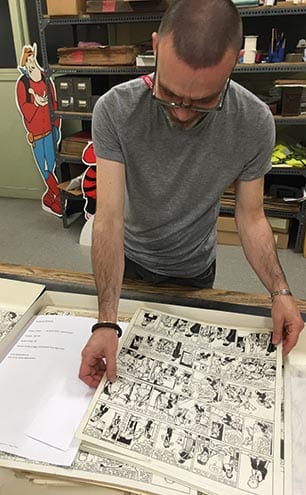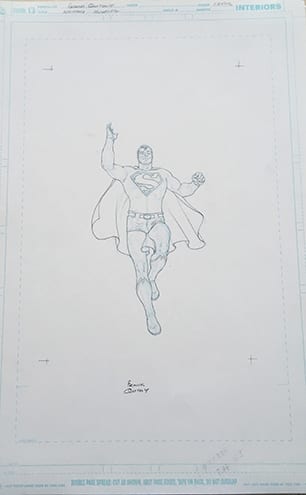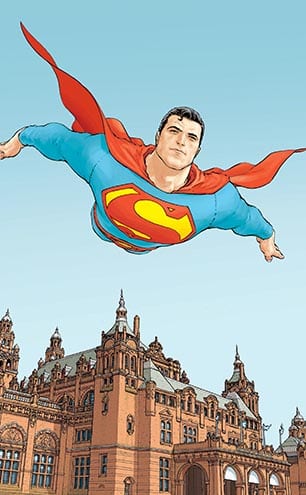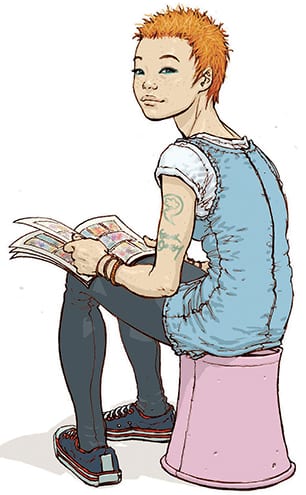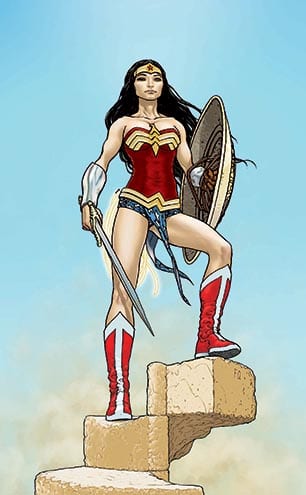The pen of Vin Deighan, aka artist Frank Quitely, is triumphing in the resurgent world of superheroes and comics at this summer’s exhibition of his work in his native Glasgow
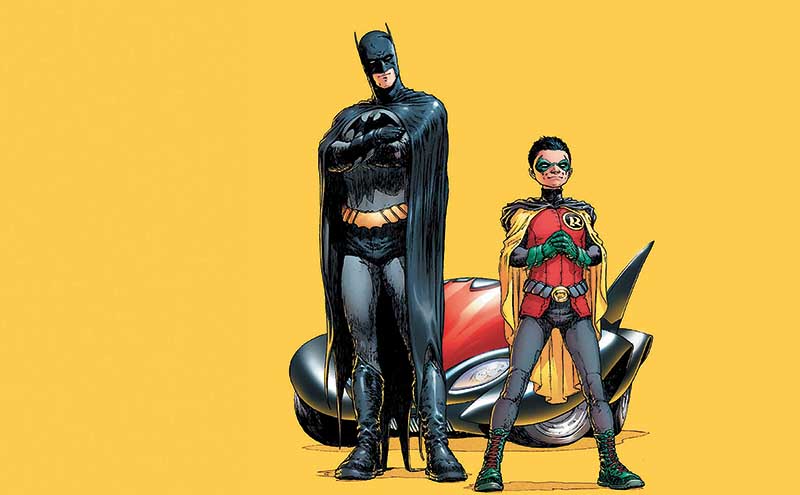
“Hey, we just wanted to say thank you, man!” The American couple are thrilled. They’re astonished to have bumped into Vin Deighan, never having expected to come face to face with the star of the show on their visit to his Art of Comics exhibition at Kelvingrove.
Vin, better known to comic devotees by the spoonerism Frank Quitely, is the artist who has taken on some of Marvel and DC Comics’ most famous characters, such as Superman, X-Men and Wonder Woman. His encounter at Kelvingrove is typical of the kind of adulation he receives at comic conventions, where fans of his work will queue for hours to have a picture signed by their artist hero.
The 49-year-old enjoys the anonymity that comes with being an artist but also appreciates the admiration he receives at conventions in the USA. In Glasgow, where he lives with his wife and three children, being recognised is a much rarer occurrence – despite the fact that, as this delighted couple show, he is a genuine superstar. “Our kids will be blown away!” they beam.
Born and brought up in the south side of Glasgow, Vin’s artistic sensibilities were honed at an early age. “I’ve just always been into drawing,” he says. “I wasn’t into comics as such, though I did read Oor Wullie and The Broons.”
He went to the Glasgow School of Art but didn’t really figure out what he wanted to do until after he graduated, when he took on a series of freelance jobs creating artwork for album covers and nightclub posters. He did some portrait work (even accepting commissions to draw pets), before submitting some ideas to a new comic book he’d heard was starting up in the late 1980s.
[sociallocker id=”19770″]
“We are a nation of storytellers, and we also have a knack for ridiculing and being cynical about things”
The publication in question, Electric Soup, was a kind of Viz for a Glasgow audience that flourished beyond the city, garnering a UK-wide following that was hungry for the crude, cynical, often ridiculous stories that included Vin’s own strip for the comic, The Greens.
“It was my homage to The Broons,” explains Vin, motioning to the cartoon strips by Dudley D. Watkins that form part of the exhibition around us. He is chuckling even now, despite having read these stories and examined these drawings hundreds of times. “I love this one,” he smiles, pointing to Daphne knitting a jumper for a boyfriend she’s trying to impress.
“She’s been getting dropped off home all week by him, on the back of his motorbike, but she doesn’t realise that under the helmet and leathers he’s a skinny wee old guy!” He laughs again, delighting in the simple ingenuity of the story’s words and pictures.
He talks about the economy of light that Watkins possesses; the looseness in his drawings that capture succinctly the expressions, gestures and body language of each character. Scotland has a strong track record in the world of comics, dating back to 1825 when the world’s first comic, William Heath’s The Glasgow Looking Glass, was published. Passion for the medium has grown ever since, with a massive spike in the number of female fans, particularly of Vin’s work that takes a progressive approach in both his commissions and his solo projects.
It wasn’t long before America came calling. He’d already crossed paths with fellow Scottish comic creatives Grant Morrison and Mark Millar and, once he began taking commissions to draw for Marvel and DC Comics’ classics including Superman and the New X-Men, his reputation as a world-class comic artist was sealed.
Much of what makes Vin’s work so impressive (aside from the sheer skill of his draughtsmanship) is hidden in each comic box. There are a lot of subtle personal touches, often attributed to his Scottish (and particularly Glaswegian) heritage. When he redid Batman for The Scottish Connection, he drew figures with recognisable Broons-esque characteristics and used colloquial terms that only a Scottish audience would get. His All-Star Superman possesses a jaw line that Desperate Dan would be jealous of, and scenes are often based on local landmarks such as Cathkin Braes.
“Scotland punches above its weight in so many areas – genetics, the games industry, contemporary art, comics,” says Vin. “With comics, I think it has a lot to do with the weather – there’s not much to do when it rains!” he laughs. “We are a nation of storytellers and we also have a knack for ridiculing and being cynical about things, and there came a time in comic book history when it needed that injection of something different that wasn’t all about flag-waving.”
Vin is currently developing a series of his own short stories that he’s been working on for the last five years. He also recently embarked on a short animated film that he’s keen to develop into a feature-length film or series. There’s also an honorary doctorate from the University of Glasgow on the cards. He’s going to have to morph into one of his superhero creations just to keep up.
[/sociallocker]
Frank Quitely: The Art of Comics is at Kelvingrove until 1 October www.glasgowmuseums.com
Words Catherine Coyle


